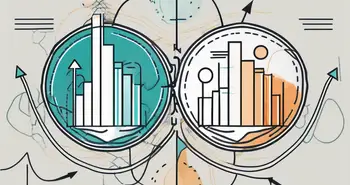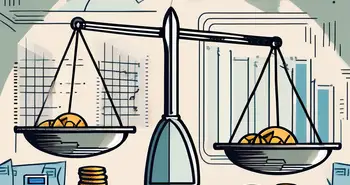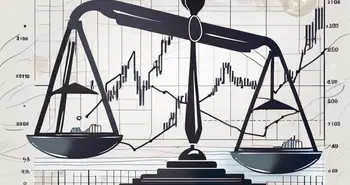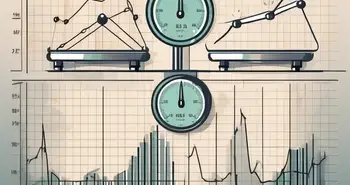The Impact of Slippage in Trading: What You Need to Know

Trading in financial markets can be an exciting and potentially lucrative venture. However, it's important to understand and navigate the various factors that can influence your trading outcomes. One such factor is slippage. In this article, I will explain what slippage is, how it can impact traders, the factors contributing to slippage, different types of slippage, and strategies to minimize its impact.
Understanding the Concept of Slippage in Trading
Slippage refers to the difference between the expected price of a trade and the actual price at which it is executed. It occurs when there is a delay or discrepancy in the execution of orders, often due to rapidly changing market conditions or high trading volumes. Slippage can be either positive or negative, and its impact on traders can be significant.
Traders often aim to enter and exit positions at specific price points to maximize their profits or minimize losses. However, slippage can disrupt these plans, resulting in trades being executed at less favorable prices than anticipated. This phenomenon is particularly common in fast-moving markets, where price changes can happen within milliseconds, making it challenging for orders to be filled at exact price levels.
Definition of Slippage
Slippage is the difference between the expected price of a trade and the price at which it is actually executed. It can occur in any financial market, including stocks, commodities, and forex.
Understanding slippage is crucial for traders, as it can impact the overall profitability of their trading strategies. By being aware of the factors that contribute to slippage, such as market conditions and order execution speed, traders can better manage their risk and optimize their trading performance.
How Slippage Occurs in Trading
Slippage can occur for several reasons. One common cause is market volatility, where prices can fluctuate rapidly, particularly during important news events or economic releases. Another factor contributing to slippage is the trading volume. When there is a high volume of trading activity, it can be challenging for brokers to fill orders at the exact desired price, leading to slippage. Additionally, the speed at which orders are executed can also contribute to slippage, as delays in order processing can result in prices moving away from the expected level.
Traders can implement various strategies to mitigate the impact of slippage, such as using limit orders to specify the maximum price they are willing to pay or the minimum price they are willing to accept. By understanding slippage and its causes, traders can make more informed decisions and adapt their trading approach to navigate this common challenge in the financial markets.
The Impact of Slippage on Traders
Slippage can have a significant impact on traders, affecting both trade execution and trading strategies. Understanding its potential repercussions is crucial for successful trading.
Slippage, in the context of trading, refers to the difference between the expected price of a trade and the price at which the trade is actually executed. This phenomenon is often seen in fast-moving markets or during periods of low liquidity. Traders need to be aware of slippage as it can erode profits and affect the overall performance of their trades.
Effect on Trade Execution
Slippage can result in trades being executed at prices less favorable than anticipated. This can lead to increased costs or reduced profits, particularly for traders who rely on precise entry and exit points. Additionally, slippage can also impact the speed at which trades are executed, potentially causing delays in order fills.
Traders should consider implementing risk management strategies to mitigate the impact of slippage. This may include using limit orders to specify the maximum price at which they are willing to buy or sell an asset. By setting these parameters, traders can help protect themselves from excessive slippage during volatile market conditions.
Influence on Trading Strategy
For traders who employ specific strategies, slippage can have a direct impact on the effectiveness of their approach. Certain strategies, such as scalping or day trading, rely on quick entry and exit points. Slippage can disrupt these strategies, making it harder to achieve desired profit targets or manage risk effectively.
It is essential for traders to continuously monitor and assess the impact of slippage on their trading performance. By keeping track of slippage occurrences and analyzing their causes, traders can make informed decisions to adapt their strategies accordingly. This proactive approach can help traders navigate the challenges posed by slippage and enhance their overall trading outcomes.
Factors Contributing to Slippage
Several factors can contribute to slippage in trading. Understanding these variables can help traders anticipate and manage slippage risk.
Slippage in trading can be influenced by various factors beyond market volatility, trading volume, and speed of order execution. One crucial factor is the presence of market makers and liquidity providers. Market makers play a vital role in maintaining liquidity in the market by quoting both buy and sell prices. However, during times of high volatility or low liquidity, market makers may widen their spreads, leading to increased slippage for traders.
Market Volatility
When markets experience high levels of volatility, prices can change rapidly. This increased price movement can lead to slippage as orders may not be executed at the desired price due to quick price fluctuations.
Another significant factor contributing to slippage is the timing of economic data releases and news events. Unexpected economic reports or geopolitical developments can cause sudden shifts in market sentiment, resulting in slippage as traders rush to adjust their positions in response to new information.
Trading Volume
High trading volumes can strain the capacity of brokers and exchanges to process orders efficiently. As a result, there may be delays in executing trades, potentially leading to slippage.
Additionally, the type of trading strategy employed can also impact the likelihood of slippage. For instance, high-frequency trading (HFT) algorithms, which rely on ultra-fast order execution, may exacerbate slippage during periods of market turbulence or when competing with other HFT participants.
Speed of Order Execution
The speed at which orders are executed can also impact the likelihood of experiencing slippage. Delayed order execution can result in prices moving away from the desired level, leading to slippage.
Traders should consider these various factors when assessing their risk exposure to slippage and implement appropriate risk management strategies to mitigate potential losses.
Different Types of Slippage
Slippage can occur in different forms, with both positive and negative consequences.
Positive Slippage
Positive slippage, also known as price improvement, occurs when a trade is executed at a more favorable price than expected. This can happen when prices move in the trader's favor between order placement and execution. Positive slippage can result in increased profits.
Negative Slippage
Negative slippage, on the other hand, happens when a trade is executed at a less favorable price than anticipated. This can occur when prices move against the trader between order placement and execution. Negative slippage can lead to increased costs or reduced profits.
How to Minimize the Impact of Slippage
While slippage is an inherent risk in trading, there are strategies traders can employ to minimize its impact.
Using Limit Orders
One effective way to reduce slippage is to use limit orders. Unlike market orders, which are executed at the current market price, limit orders allow traders to specify the maximum price they are willing to buy or the minimum price they are willing to sell. By placing limit orders, traders can have more control over the execution price and reduce the likelihood of slippage.
Trading During High Liquidity Periods
Another way to minimize slippage is to trade during high liquidity periods. Liquidity refers to the ease of buying or selling an asset without causing significant price fluctuations. When markets are more liquid, such as during regular trading hours or when multiple global trading centers are active simultaneously, the chances of experiencing slippage can be reduced.
As an experienced trader, I can assure you that slippage is a common occurrence in the financial markets. It's essential to consider slippage risk when developing your trading strategies and managing your expectations. By understanding the factors contributing to slippage and using appropriate execution techniques, you can mitigate its impact and improve your overall trading performance.
Ready to take your trading to the next level while minimizing the impact of slippage? Discover Morpher, the revolutionary trading platform that leverages blockchain technology for zero fees and infinite liquidity. With Morpher, you can trade a wide array of assets, from stocks and cryptocurrencies to unique markets like NFTs and sneakers, all with fractional investing and the option for 10x leverage. Experience the safety and control of the Morpher Wallet and enhance your trading strategies with our unique Virtual Futures. Sign Up and Get Your Free Sign Up Bonus today to join the future of investing with Morpher.

Disclaimer: All investments involve risk, and the past performance of a security, industry, sector, market, financial product, trading strategy, or individual’s trading does not guarantee future results or returns. Investors are fully responsible for any investment decisions they make. Such decisions should be based solely on an evaluation of their financial circumstances, investment objectives, risk tolerance, and liquidity needs. This post does not constitute investment advice.

Painless trading for everyone
Hundreds of markets all in one place - Apple, Bitcoin, Gold, Watches, NFTs, Sneakers and so much more.

Painless trading for everyone
Hundreds of markets all in one place - Apple, Bitcoin, Gold, Watches, NFTs, Sneakers and so much more.








